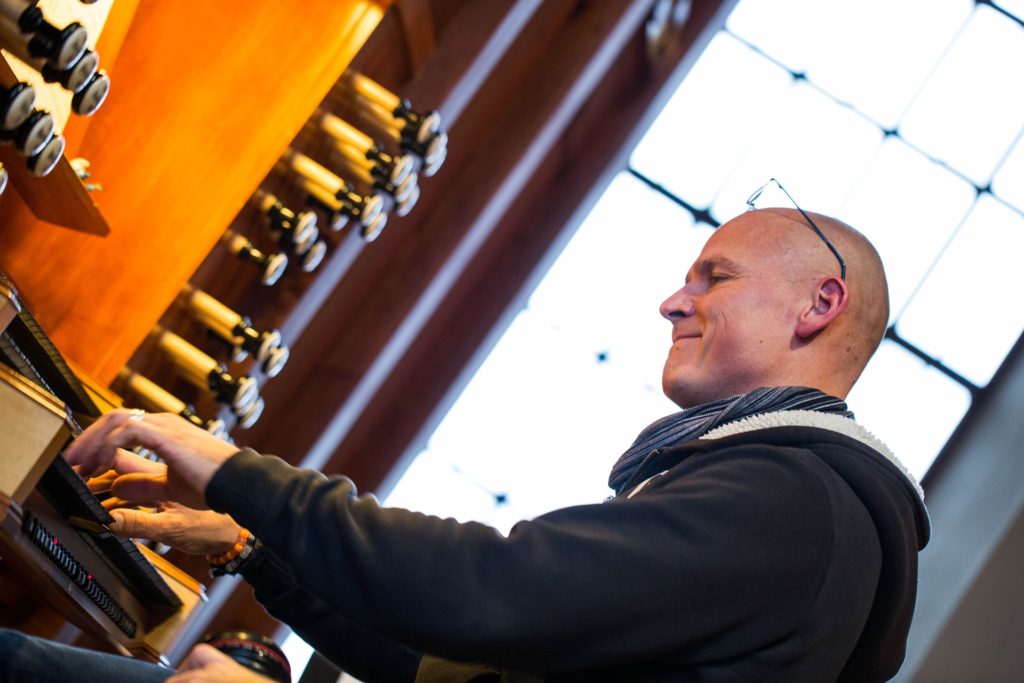Organ – Sensing Suppressed Ongoing Physical Aches and Pains (Pipe)(Musicians)(Psychology)(Pain)(Strain)(Injuries)(Posture)(Alexander Technique)(Albuquerque)
This ebook, An Alexander Technique Approach to Organ Technique, is published on this website in a PDF format. It is very detailed and practical, and it will give you the physical tools you need to take the limits off of your ability to create the accurate organ technique you want without sacrificing your body.
This ebook is also for sale on all AMAZON websites in a KINDLE format.
Located in Albuquerque, New Mexico, U.S.A. (MOVEMENT THERAPY)
WHEN YOU ARE FULLY WILLING TO SENSE THE SUPPRESSED ACHES AND PAINS IN YOUR BODY, YOU ARE READY TO MAKE CHANGES TO THE ELEMENTS OF YOUR ORGAN TECHNIQUE THAT CAUSE THESE ACHES AND PAINS.
The above statement may seem rather obvious, but for so many hurting organists it has been long term aches and pains that the player has pushed away like a bad headache. There are only three cures for a long term headache. Sit down and observe the headache until it passes, take an aspirin, or both.
There are three cures for the aching organist. Sit down and observe your technique, change your technique, or both.
When the organist truly observes his or her technique, he or she is sensing what is happening whole body and where there are consistent aches and pains as the organist plays. Does this mean the organist needs to make major changes to his or her playing? Not necessarily. If the organist can release any excess tension from head to toe, and the organist has good posture, then the player may realize that he or she has been playing with excessive tension throughout the whole body, and this has been what’s causing the aches and pains.
What I just described is the observing part. Simply, you cannot observe your technique and sense whether you’re hurting without making or causing change to your technique and posture. To make sure it is good change, you want to release the excess tension rather than tense even more against the aches and pains you’ve brought to consciousness.
Once you’ve brought to consciousness where you’ve been hurting and begin to release the tension, you will probably become aware of a whole new level of discomfort in your body. That discomfort is the extra physical work you are doing unnecessarily to support a body slumping over overarching as you play the organ.
Now would be a really good time to bring balanced whole body posture to your organ playing. Because if you sit at the organ with an overarched back or hunkered down slumping as you play, then you can never truly release the excessive tension out of your arms and legs. When you are fully upright using the minimal amount of musculature with a free neck and a head released leading a lengthening spine, then you can truly release the tension throughout your whole body through observation and intention.
What I just described is doing both. You are observing your technique and applying the Alexander Technique principles of good body use to your whole body, so that observation and intention come together to help you play the organ without hurting.
Now, not having any aches or pains at the organ is a very good thing, but it may not be enough. IF YOUR POSTURE IS BALANCED AS YOU PLAY THE ORGAN, BUT YOU CANNOT PLAY WHAT YOU WANT WITH EASE, THEN YOU HAVE NOT FULLY CREATED AN ORGAN TECHNIQUE THAT WORKS.
To create an organ technique that truly works, a technique that brings ease to playing the difficult organ music, you have to bring the Alexander Technique principles of good body use to the specifics of your organ technique. This means you really have to explore if what you do from your elbows to your fingertips and with your feet works as you play.
This means, you want to see if how you use your fingers, wrists, arms, and feet is truly to your loving advantage. So, explore how you use your whole body at the organ, and examine what you have believed is the right way to play the organ and keep what works and release what doesn’t.
